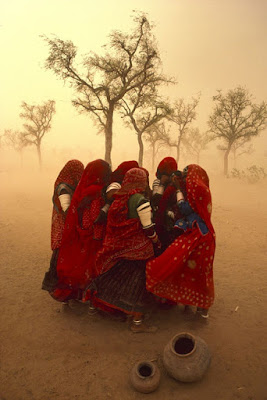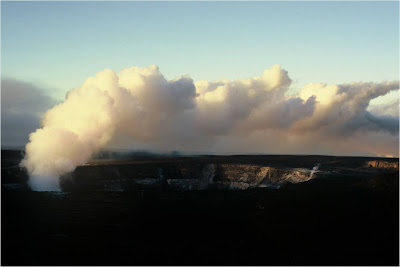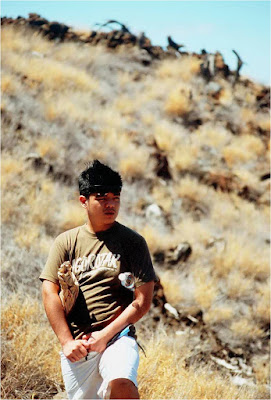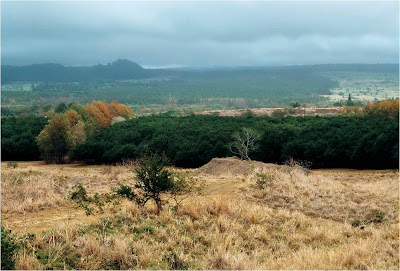The world knows Steve McCurry as the photographer who famously shot this National Geographic cover image:

Sharbat Gula was then, in 1984, an adolescent refugee during the Soviet War in Afghanistan.
But McCurry is more than just a one-hit-wonder photographer. Over the years his images of India and its neighbours (i.e. the South Asian subcontinent) have come to define the way much of the world views those nations.
A key tool in his work was Kodachrome 64 colour slide film. Known for its brilliant, deep reds, it reproduced everything from Indian trains to Sharbat Gula's shawl, and even dust, in characteristic rust-red hues that evoked emotions about the subjects of his photographs in a way, many might argue, no other film could.
This is how he recently described the film: "It has such a wonderful color palette... a poetic look, not particularly garish or cartoonish, but wonderful, true colors that were vibrant, but true to what you were shooting."
You can read about the adventures of the last roll of Kodachrome produced
here.

Train and Taj Mahal.

Taj Mahal reflection.

Rajasthan dust storm.
McCurry said of this image, "My first instinct was to put away the camera, to protect it from the dust. But then I figured I could buy new equipment, but the moment would not come again."
* * *
Over the years, McCurry, Kodachrome and the Indian subcontinent seemed to 'co-evolve' and define each other to the point of synonymity.
Closer to home, I think I may be developing a similar affinity for Fujichrome Astia. Its reds are nowhere near as earthy or rusty as Kodachrome's, but of all the film stocks produced by Fujifilm, it is perhaps the most 'human'. Velvia is for wild, saturated colours; Provia makes everything look natural; and Sensia is the 'consumer' (as opposed to 'professional') slide film, which I have not tried.
Based on random internet searches, it appears that Astia is the least popular of Fujifilm's colour slide films in spite of how it is marketed as an 'ideal' film for portraiture. But I like it!
It all started when the photographer Kelvin Chan gave me a roll of Astia to try out; having moved to digital, he gave me quite a lot of his unused film stock. I brought it with me to Pantu, Sarawak during STOMP in June 2008, and shot these:

The kitchen in Tuai (village leader) Usop's house, Kampung Abok.

Luke riding on the back of a pick-up truck with one of Tuai Usop's relatives, and a fresh harvest of sugar cane.
There was something in the reds and skin tones that looked different from the other film stocks I'd shot, and certainly worlds removed from digital. The pictures had an aged, yesteryear look that seemed at times sympathetic, at times melancholic.
It wasn't until June this year that I had another opportunity to shoot Astia. I employed three rolls over the course of SUSI, all during the Big Island trip: one on the Pu'ukohola Heiau hike, one at the Volcanoes National Park at sunrise, and one at Ka'u.
I considered all three rolls successful, in different ways.
At the Volcanoes National Park:

This shot of the Halema'uma'u Crater (one of the most active volcanoes in the world) at sunrise became an instant hit with my mother.

Loads of sulphur dioxide gas spewing out of the crater.
On the Pu'ukohola Heiau hike:

I like how Astia renders the skin and earth tones in this picture of my room-mate Ronald.
.jpg)
The brilliant blue sea contrasts with sharp, piercing grey rocks in this portrait of Nasha.
Put these attributes of Astia together and you get:

One of my favourite pictures from the trip to Hawai'i.
But the most disarming (and surprising) experience of shooting Astia came one evening when I set out to take pictures of the Ka'u landscape near and around Pahala, where we were staying during the second half of our trip to the Big Island.

Clouds, Ka'u.
And this picture rules them all:

It was a horribly overcast day.
There was a gorgeous sunset the evening before, and so I decided to set out at the same time the next day, to take pictures of the late afternoon glow over Ka'u. But the sky was a lot less generous on my attempt.
Still, since it was the last evening we would spend in Ka'u, and in fact on the Big Island, I decided just to take a few snapshots to record the appearance, if not the mood, of the place.
When the slides were developed, I was stunned. Astia gave the drab, cloudy landscape a particularly sympathetic quality that maintained the beauty of the place in spite of the poor light. The orange-red foliage contrasted well with the green, and the dried grass in the foreground stood out against the deeper greys in the distance. What I did not expect was for Astia to bring out the red-orange-brown end of the spectrum the way it did.
The glimpses of inspiration at Pantu were reborn in Hawai'i.
And so, my love affair with Astia continues!












.jpg)


















